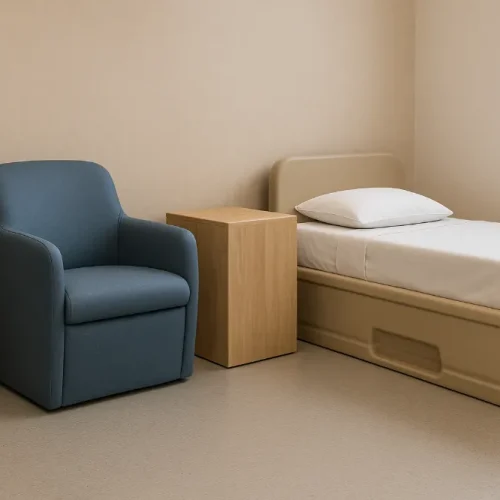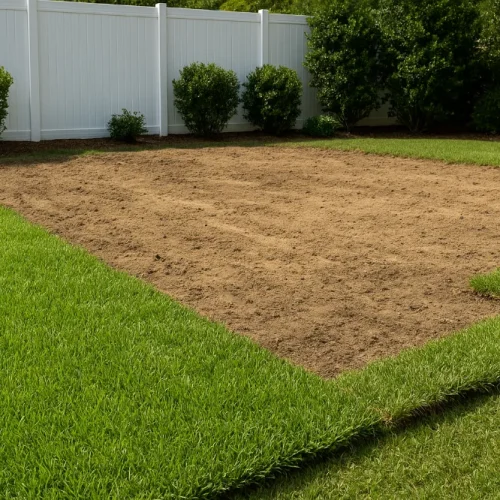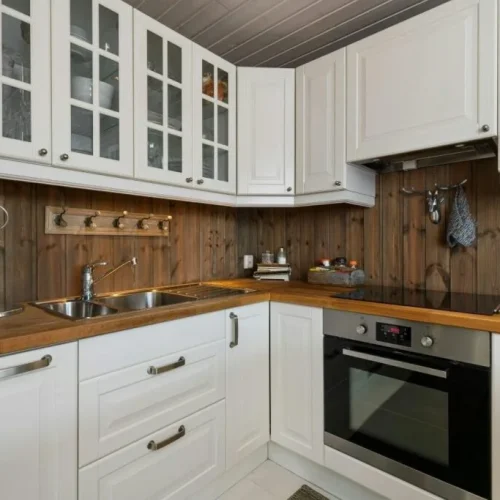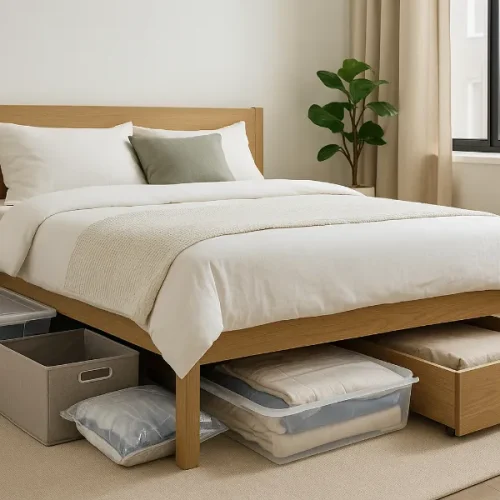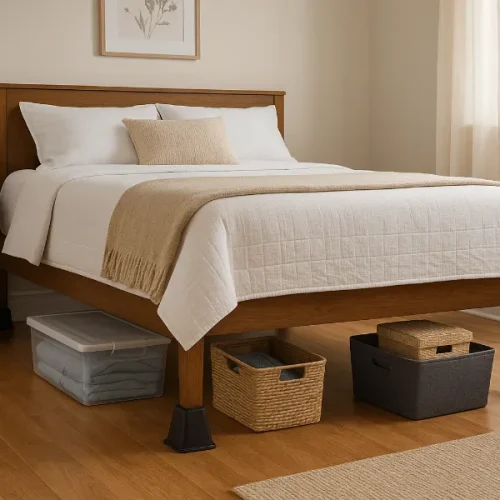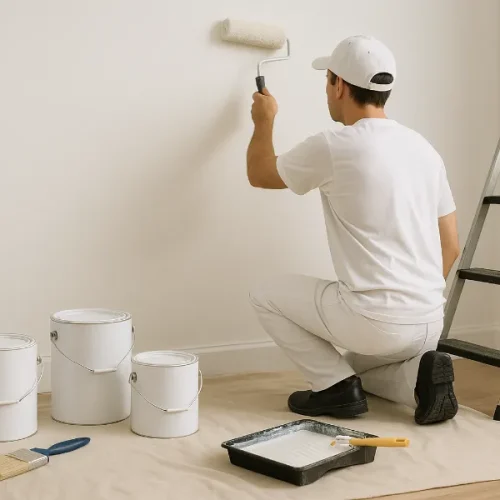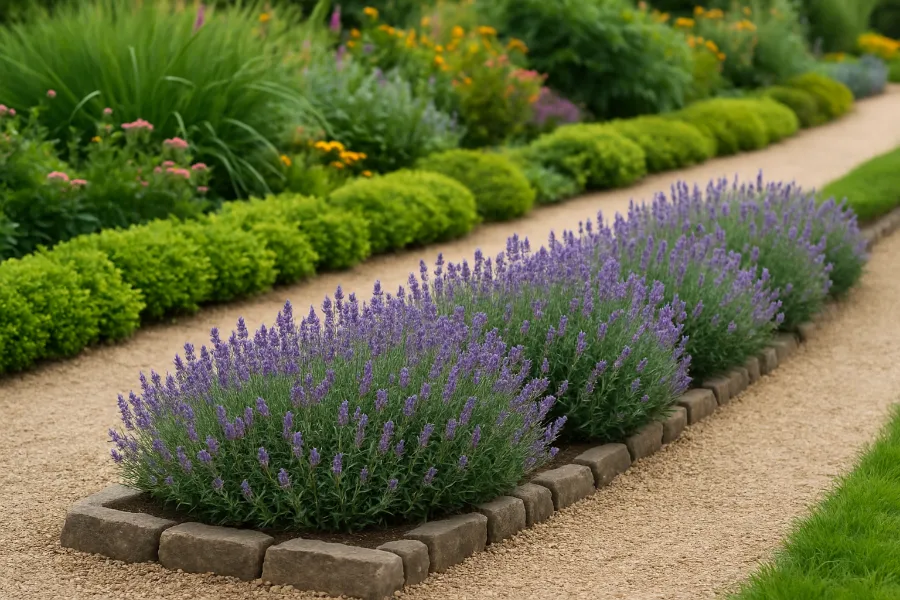
Garden borders do more than simply separate flower beds from pathways. They shape the visual rhythm of a landscape, guide movement through a yard, protect plant roots, keep mulch contained, and provide a finished sense of order. But outdoor environments are not static. Rain falls, sun bakes, frost expands and contracts, and soil shifts. Animals dig, roots grow, and time works on every surface. Because garden edges sit right where all these forces meet, choosing weather-resistant materials matters not only for beauty, but also for long-term performance and cost efficiency.
This article explores durable garden border materials, why they hold up well outdoors, how they interact with climate and soil, and what aesthetic and functional roles they can play in different landscape styles.
Understanding Weather Resistance and Outdoor Durability
Weather resistance refers to a material’s ability to withstand prolonged exposure to sunlight, rain, wind, heat, frost, and moisture without losing structural integrity. Outdoor durability also considers how the material responds to soil composition, plant roots, insects, and seasonal movement in the ground.
Understanding soil behavior is especially important. The U.S. Department of Agriculture’s Soil Health information explains how different soils expand, contract, drain, or retain water, influencing how borders shift or settle over time.
Key factors affecting border longevity include:
- Moisture and Drainage: Excess moisture accelerates rot in wood and erosion around loose stone or mulch.
- UV Exposure: Sunlight breaks down pigments and weakens plastics over time.
- Freeze-Thaw Cycles: Water expansion can crack porous materials.
- Soil Type: Clay, sand, and loam each move differently as temperature and water conditions change.
- Temperature Extremes: Heat and cold cycles can warp or weaken softer materials.
Stone Borders: Natural Strength and Timeless Appeal
Stone is one of the most durable edging materials available, shaped over thousands of years by geological forces. It stands up to moisture, sun, and temperature swings with virtually no structural degradation. More background on stone’s durability in building can be found in the Stone (construction material).
Types of Stone Used for Borders:
- Fieldstone
- Flagstone
- Granite
- Limestone or sandstone
Advantages:
- Lasts decades with minimal care.
- Stable under heavy rainfall and erosion pressures.
- Fits natural landscapes beautifully.
Considerations:
- Heavy to transport and install.
- Higher initial cost depending on stone type.
Stone works especially well in gardens that emphasize natural form and long-term permanence.
Brick Borders: Classic Geometry and Reliable Weather Resistance
Brick brings a warm, traditional tone to garden edges and withstands moisture and heat with little wear when properly installed. It is ideal for formal garden layouts, lawns with clean mowing edges, and pathways where stability is important.
Brick edging patterns include:
- Soldier course (vertical)
- Rowlock course (flat and narrow)
- Herringbone for high-strength edges
Brick can last for decades when laid over a compacted gravel or sand base, and when the bricks themselves are rated for outdoor frost resistance.
Metal Edging: Sleek, Minimalist, and Strong
Metal edging provides a clean visual line and excellent performance in climates with shifting soil or variable weather. Corten steel develops a protective rust-colored patina that prevents deeper corrosion, while aluminum remains lightweight and rust-free.
Advantages:
- Minimal visual presence.
- Strong boundary control for mulch and soil.
- Easily shaped to follow pathways or curves.
Considerations:
- Some metal types may stain pavement while patina develops.
- Steel can be heavy and requires gloves for safe handling.
Best suited for modern, sculptural, or desert-inspired garden layouts.
Concrete Borders: Stability and Strength
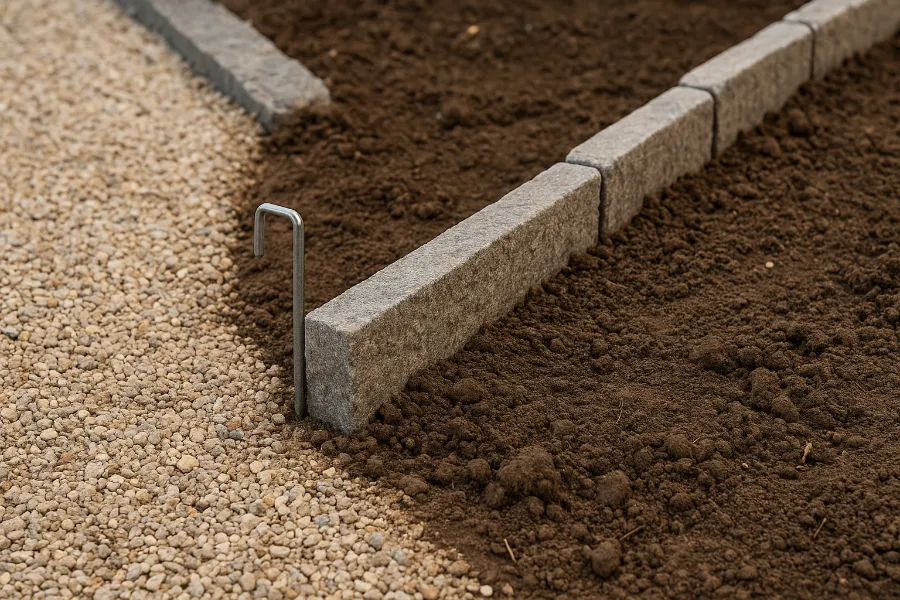
Concrete offers one of the highest levels of durability, especially for structured or high-traffic landscapes. Options include poured-in-place curbs, modular concrete blocks, or concrete pavers.
Advantages:
- Highly weather-resistant.
- Can be colored, polished, or textured to match your landscape.
- Excellent for retaining walls and raised beds.
Considerations:
- Installation can be labor-intensive.
- Cracking may occur in freeze-thaw climates if not reinforced or installed with a proper base.
Concrete fits well in modern, urban, and formal garden environments.
Composite and Recycled Plastic Edging: Longevity with Sustainability
Composite edging blends recycled wood fibers with polymer binders, while recycled plastic edging uses reclaimed plastic to create flexible, long-lasting border forms.
Advantages:
- Resistant to rot, insects, moisture, and fading.
- Lightweight and easy to install.
- Often made from recycled materials, reducing landfill waste.
Considerations:
- Cheaper versions may warp in strong heat.
- Color availability varies by brand.
Composite is one of the best choices for low-maintenance gardeners.
Wood Edging: Natural Beauty with Selective Weather Resistance
Wood offers warmth and a soft natural look. Durability depends heavily on wood species and treatment.
Best Weather-Resistant Wood Types:
- Cedar
- Redwood
- Black Locust
- Pressure-treated pine (avoid near vegetable beds due to chemicals)
Advantages:
- Easy to cut and shape.
- Complements rustic, cottage, and woodland gardens.
Considerations:
- Even the best wood will eventually degrade.
- Requires periodic sealing or replacement.
Wood is ideal where natural aesthetics are prioritized over long-term permanence.
Living Borders: Edges Made of Plants
Living borders soften edges and blend pathways into garden beds. They offer fragrance, movement, and seasonal visual interest.
Examples include:
- Boxwood hedging
- Lavender rows
- Thyme or moss along stepping stones
- Dwarf grasses for soft edging
Living edges require pruning and monitoring but can bring depth and personality to the garden.
Choosing the Right Border for Climate
| Climate | Best Options | What to Avoid |
|---|---|---|
| Wet / Humid | Stone, composite, metal | Untreated wood |
| Dry / Hot | Stone, concrete, Corten steel | Thin plastics that may warp |
| Coastal | Aluminum, composite, stone | Steel prone to salt corrosion |
| Freeze-Thaw Seasons | Brick, stone, flexible metal | Materials that absorb water and crack |
Installation is as Important as Material Choice
A long-lasting border depends on:
- A compacted gravel or sand base
- Proper drainage
- Level alignment
- Secure anchoring
Even durable materials fail if the soil beneath shifts or traps water.
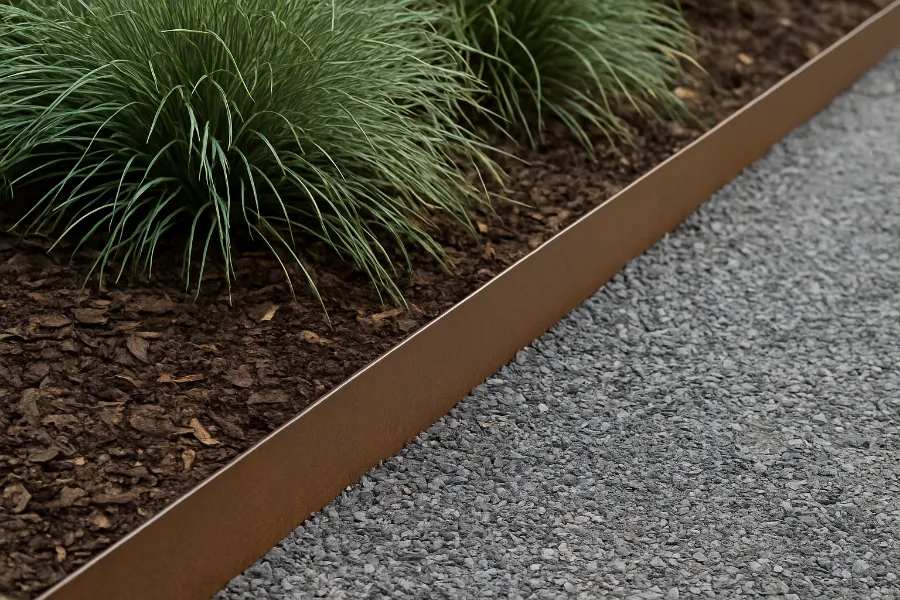
Conclusion
Choosing weather-resistant garden border materials involves balancing appearance, durability, climate compatibility, and maintenance expectations. Stone, brick, metal, concrete, composite materials, wood, and living plant edges all bring distinct strengths to the landscape. The best border enhances your garden’s style while standing strong through changing weather, soil conditions, and seasons of growth. By choosing the right material and installing it with care, your garden borders can remain functional and beautiful for many years to come.
FAQs
Stone and concrete typically provide the longest lifespan because they resist moisture, UV exposure, and soil pressure.
Yes, especially aluminum and weathering steel. However, in coastal areas, aluminum is preferred to avoid salt corrosion.
Yes, as long as the bricks are rated for outdoor use and installed on a stable, well-draining base.
Wood provides a natural look, but it requires maintenance and will eventually break down. Cedar, redwood, and black locust perform best.
Recycled plastic or composite edging is generally the easiest because it is flexible, lightweight, and requires simple anchoring.
Concrete can crack if installed without proper reinforcement or if exposed to extreme freeze-thaw conditions without drainage.
Install a firm base of compacted gravel or sand, ensure proper leveling, and anchor the material securely.
Yes, but they require regular trimming to maintain shape and do not contain soil as firmly as hard materials.
Many are made from recycled plastics or wood fibers, making them a sustainable and long-lasting option.
Match your border to your garden’s design—stone and wood for natural gardens, metal and concrete for modern layouts, and brick for classic or formal styles.



